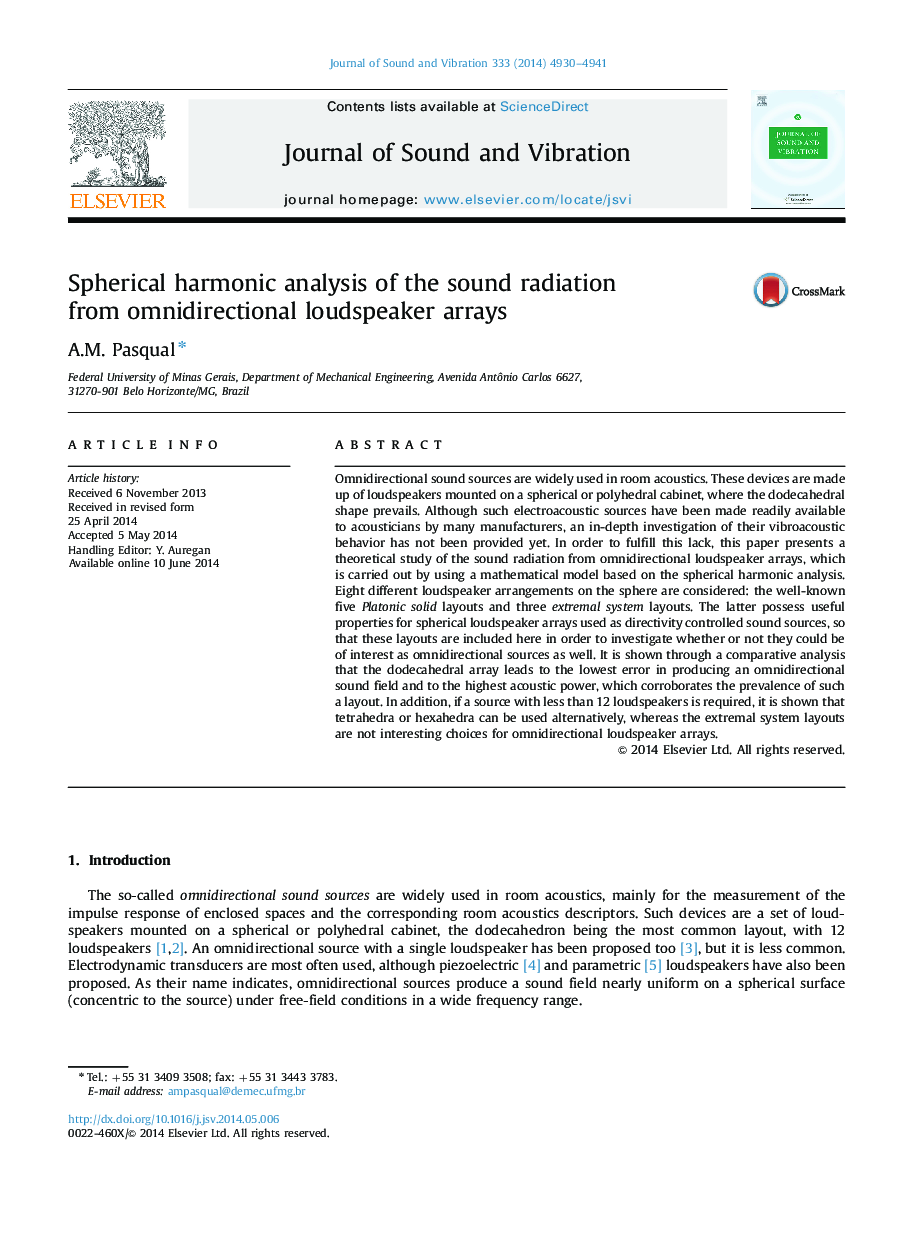| Article ID | Journal | Published Year | Pages | File Type |
|---|---|---|---|---|
| 287571 | Journal of Sound and Vibration | 2014 | 12 Pages |
•Spherical (or polyhedral) loudspeaker arrays are widely used in room acoustics as omnidirectional sound sources.•The sound radiation from omnidirectional loudspeakers is studied by spherical harmonic analysis.•The dodecahedral shape leads to the best omnidirectionality and to more sound power.•Extremal system layouts do not present a good performance as omnidirectional sources.
Omnidirectional sound sources are widely used in room acoustics. These devices are made up of loudspeakers mounted on a spherical or polyhedral cabinet, where the dodecahedral shape prevails. Although such electroacoustic sources have been made readily available to acousticians by many manufacturers, an in-depth investigation of their vibroacoustic behavior has not been provided yet. In order to fulfill this lack, this paper presents a theoretical study of the sound radiation from omnidirectional loudspeaker arrays, which is carried out by using a mathematical model based on the spherical harmonic analysis. Eight different loudspeaker arrangements on the sphere are considered: the well-known five Platonic solid layouts and three extremal system layouts. The latter possess useful properties for spherical loudspeaker arrays used as directivity controlled sound sources, so that these layouts are included here in order to investigate whether or not they could be of interest as omnidirectional sources as well. It is shown through a comparative analysis that the dodecahedral array leads to the lowest error in producing an omnidirectional sound field and to the highest acoustic power, which corroborates the prevalence of such a layout. In addition, if a source with less than 12 loudspeakers is required, it is shown that tetrahedra or hexahedra can be used alternatively, whereas the extremal system layouts are not interesting choices for omnidirectional loudspeaker arrays.
